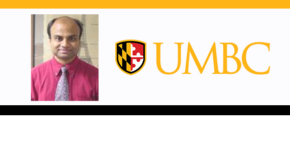 A better way to rid waterways of harmful PCBs could be on the way.
A better way to rid waterways of harmful PCBs could be on the way.
Upal Ghosh, professor in the department of chemical, biochemical, and environmental engineering at the University of Maryland, Baltimore County, discusses this breakthrough.
My research group explores fundamental process mechanisms that control pollutant fate in soils, sediments, and aquatic environments. We use multidisciplinary tools to investigate exposure and bioavailability of organic and metal pollutants to organisms. The new understanding is used to develop novel remediation technologies and site-specific remediation goals. Recent projects have focused on contaminants such as PCBs, PAHs, pesticides, dioxins, and mercury and fall under three broad categories: 1) assessment of pollutant fate and bioavailability, 2) analytical methods for the assessment of pollutant bioavailability, 3) development, demonstration, and technology transition of novel remediation technologies for polluted sediments.
PCBs
PCBs, or polychlorinated biphenyls, are flame retardant chemicals that were used widely in transformers and other industrial processes.
Scientists have established that a natural process called microbial dechlorination can break down PCBs. However, PCBs continue to persist in the environment. Why? For a long time, scientists didn’t really know.
As a result, ironically, the Hudson River site where microbial dechlorination was first documented by scientists nearly 30 years ago had to be cleaned up by relocating sediments to a landfill at a cost of a billion US dollars.
However, our recent work helps make it possible to rid waterways of dangerous PCBs more effectively and at a much lower cost. We used a novel sampling technique to measure for the first time the microbial dechlorination rate of PCBs at low water concentrations, and we demonstrated that it is possible to predict the rate of dechlorination in sediments. We showed that low dissolved concentrations of PCBs within sediment is the main bottleneck for growth of the organisms that break down PCBs. This new understanding allowed us to translate the technology to the field.
We engineered around the growth bottleneck by adding large numbers of these organisms, which had been grown in the lab, to sediments in the field.
In our recent pilot-scale and full-scale field projects, we are demonstrating the feasibility of using this technique to clean up PCB-contaminated sites. Coming nearly 30 years after the discovery of microbial dechlorination of PCBs, these recent innovations in science and engineering could finally enable us to remove these persistent and dangerous compounds from the environment.
